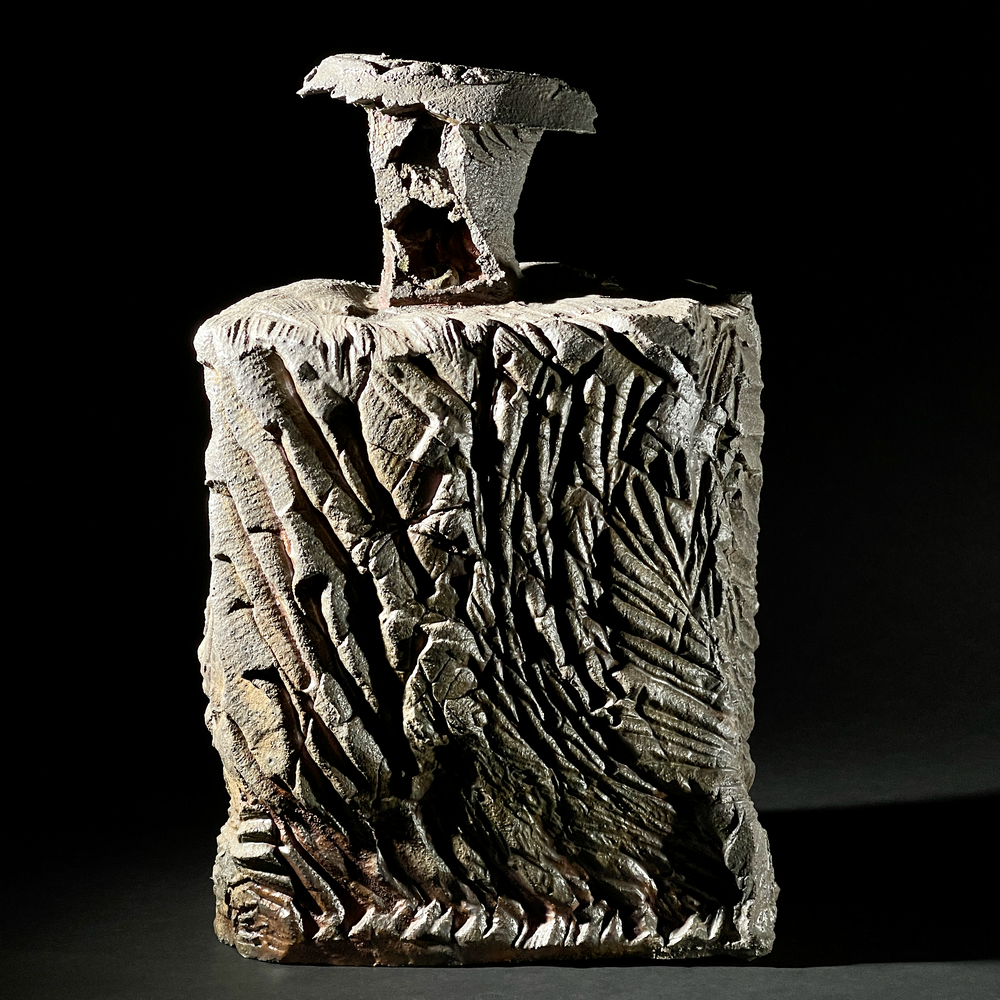Dear Potters;
Today, as I was hand-building a ceramic piece for a work in progress, the studio was unusually quiet: no frenzy of students, no classes rolling in. Only the timpani of rain on the window, and the repetitive tapping of my hake brush’s flat handle on the damp clay kept me company. The latter caught my attention, for it was the combination of wood percussing on leather-hard stoneware that resonated in a most somber and comforting manner. In this music, I could hear the dry wood impressing the grog deeper into the surface, the cavity of the form reverberating, the thick and thin walls of the cylinder vibrating at different frequencies as I sought to shape the form. I contemplated all the ways that the sound of clay and instrument inform me of my progress as well as my course of action, consciously or not. Conversely, the usual cacophony of my environment–whether it be music on the stereo or social activity–likely obscures a number of important signs and signifiers that could otherwise have lead to a deeper understanding of the nature of this medium. What if all this time I have been ignoring the quakes that might lead to a vessel collapsing unexpectedly, or have been unaware of the shift in my carving tool’s pitch as it abrades and punctures through the wall of an incised jar?
Sure, I’ve tapped my finger on the foot of a bowl or bottle to guess how thick or thin the piece is before trimming. And sure, I’ve recoiled as my trimming tool screeched like nails on a chalkboard as it chattered on a bone-dry ware. But how many among us have consciously listened for that subtle shift in music in our clay as we wedge, that “wet car tires on a rainy street sound” transitioning to “ wind hissing through dry oak leaves” as the plaster soaks up the excess moisture? Can you hear, just as much as you can feel, when you need more or less water during your pulling of cylinders? Have you noticed your vessel humming away as its hollow body amplifies the wheel’s electric vibration? It’s a pretty thrilling experience, and not unlike sensing the inaudible notes of the pipe organ that are felt in the cavities of the body rather than heard in the ears.
Juhani Pallasmaa’s book The Eyes of the Skin, an examination of the relationship between our senses and architectural spaces, makes frequent mention of how we use our hearing to acclimate to/calibrate our experience to space and place. This cultural shift from aural to optical understanding of the world has led to a spectatorial rather than participatory engagement with the environment. I venture to suggest that this shift can just as easily be applied to the plastic arts, in which over time the eye has dominated over the tactile, lingual, auditory, and olfactory sensations of pottery and ceramics. (Take time to smell your clay before you take it out of the bag!)
This week’s video segment is a meditation on the musicality and choreography of pottery: https://www.youtube.com/watch?v=wTd7UIKgHw4 Filmed in 2016 in Tao Yao, eastern China, this brief documentary beautifully examines the ephemeral experience of sound in our dance with clay. I encourage you to keep tabs on just how many kinds of sounds you can gather from the film, all the while asking yourself, “What did I learn about the nature of the material that I didn’t know before?”
The next time you’re in the studio making a brand new piece, listen. In fact, close your eyes and just listen as you wedge or pull. Chances are you’ll hear your form awakening into being before your very ears.
As always, throw well and prosper.
-Auguste

